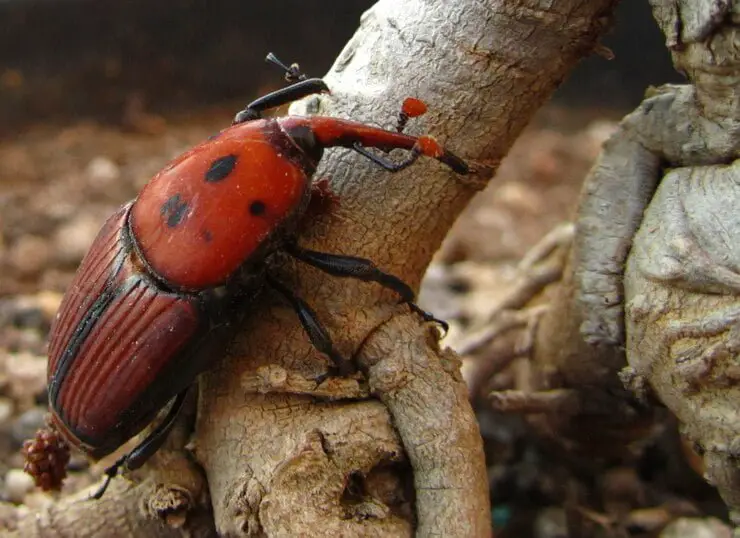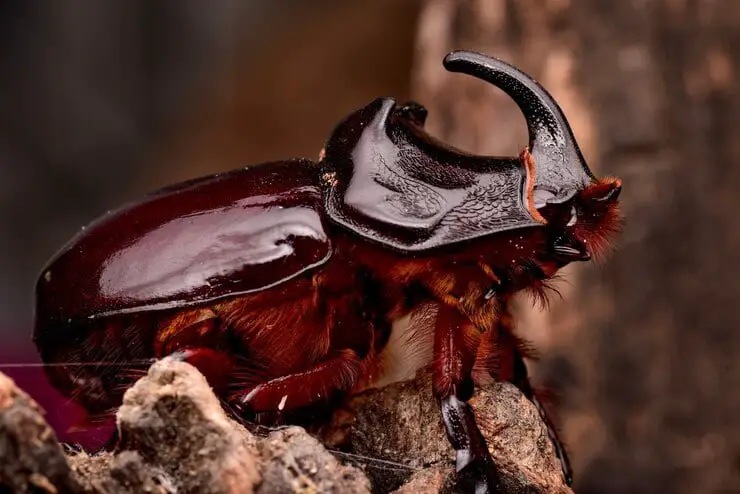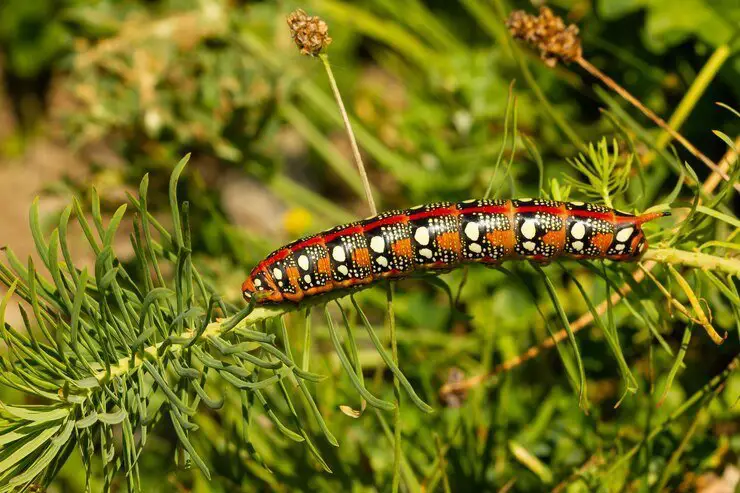Table of Contents
Introduction
Boxelder bugs (Boisea trivittata) are common pests that can invade homes, particularly in the fall and spring months. These pests are not only a nuisance but can also damage plants, particularly boxelder trees. If you’re dealing with a boxelder bug infestation, this guide will provide you with effective strategies to eliminate them from your home and garden.
Understanding Boxelder Bugs
Boxelder bugs are about 1/2 inch long and have black bodies with distinctive orange or red markings. They are attracted to warmth and sunlight, often entering homes during the fall as they seek shelter for the winter. Although boxelder bugs do not pose any significant threat to humans or pets, their presence can be quite bothersome.
How To Get Rid of Boxelder Bugs
Signs of Boxelder Bug Infestation
- Visible Bugs: Spotting boxelder bugs on windowsills, walls, or outdoor plants.
- Staining: The excrement of boxelder bugs can leave stains on surfaces.
- Clustered Groups: Large clusters of boxelder bugs can often be found basking in sunlight.
How To Get Rid of Boxelder Bugs
Boxelder bugs can be a nuisance, especially when they congregate in large numbers around homes and buildings. These bugs are usually harmless, but their presence can be annoying, and they can sometimes cause minor damage to plants or leave stains on surfaces. Here’s a detailed guide on how to get rid of boxworms effectively:


1. Understand Boxelder Bugs Behavior.
Before taking action, it’s helpful to understand a little about boxladder bugs:
- Seasonal Activity: Boxelder bugs are most active in the fall when they seek out warm places to overwinter. They are often found on the sunny side of buildings or inside houses where they seek warmth.
- Attraction: These insects are particularly attracted to boxelder trees (hence their name) as well as maple and ash trees. They feed on the seeds, leaves and twigs of these trees.
2. Block entry into your home to get rid of Boxelder Bugs.
The best way to deal with box worms is to prevent them from entering your home in the first place.
- Seal cracks and gaps: Inspect your home’s walls, foundation, windows, doors and utility pipes for any cracks or gaps. Seal these openings with caulk or weather stripping to prevent boxworms from entering.
- Install door sweeps: Install door sweeps on exterior doors to close the gap between the door and the threshold. This will help prevent their entry into your home.
- Screen Vents and Windows: Make sure all windows and vents are properly screened and there are no holes or gaps in the screens. Consider using fine mesh screens, as boxworms can squeeze through small openings.
3. Reduce their habitat.
Reducing habitat around your home can make the area less attractive to boxelder bugs.
- Remove boxelder trees: If possible, consider removing female boxelder trees from your property, as they are a primary attractant for these pests. This may not be practical for everyone, but it can significantly reduce boxelder bug populations.
- Trim vegetation: Cut back any bushes, trees or plants near your home, as these can harbor boxelder pests. Keeping plants well maintained can reduce the number of places where these pests can accumulate.
- Rack leaves and debris: Boxelder bugs can hide in piles of leaves, grass clippings, and other yard debris. Regularly rake and remove debris from around your home to eliminate potential hiding spots.
4. Use natural repellants to get rid of boxelder bugs.
There are many natural methods you can use to repel or kill boxelder pests.
- Soap and water solution: One of the most effective and easiest ways to kill boxworms is to spray them with a solution of soap and water. Mix 1-2 tablespoons of liquid dish soap with a quart of water and spray directly on the insects. The soap breaks down their outer layer, causing them to dehydrate and die.
- Essential Oils: Certain essential oils, such as eucalyptus, tea tree, and lavender, are known to repel boxelder mites. Mix a few drops of essential oil with water in a spray bottle and apply around windows, doors and other entry points to repel insects.
- Diatomaceous Earth: This natural powder is made from fossilized diatoms and is harmless to humans and pets. Sprinkle diatomaceous earth around your home, in cracks, or other areas where you’ve seen boxelder bugs. It works by dehydrating the insects, causing them to die.
5. Vacuum them.
If box worms have already entered your home, the fastest way to get rid of them is to vacuum them.
- Use a shop wick: A shop wick is ideal for this task, especially if you are dealing with large numbers of insects. After vacuuming, dispose of the contents of the vacuum bag outside your home.
- Avoid squashing: Try not to squish insects, as they can emit odors and stain walls or clothes.
6. Use pesticides (as a last resort)
Although natural methods are generally preferred, you may want to consider using pesticides if the infestation is severe.
- Outdoor insecticide: Apply a residual insecticide around your home, especially around doors, windows and other entry points. Look for products labeled for use against boxworms and follow the manufacturer’s instructions carefully.
- Indoor insecticide: For indoor use, choose an insecticide that is safe for use indoors. Spray areas where bugs are entering or congregating, such as window sills, baseboards, and carpeting. Always follow safety instructions when using chemical pesticides, especially indoors.
7. Natural Remedies to get rid of Boxelder Bugs
Boxelder bugs can be a persistent nuisance, especially in the fall and spring when they seek warmth and shelter. While there are various methods to control their populations, essential oils and other natural remedies provide eco-friendly options. This guide explores the most effective essential oils, natural remedies, and how to use them to repel boxelder bugs effectively.
Why Use Natural Remedies Essential Oils and ?
Essential oils and natural remedies are concentrated plant extracts and common household ingredients that can deter boxelder bugs due to their strong scents and natural insect-repelling properties. They offer a non-toxic alternative to chemical pesticides, making them safe for pets and humans when used correctly.
Best Essential Oils for Boxelder Bugs Elemenation
1. Peppermint Oil
- Properties: Peppermint oil has a strong, fresh scent that is unpleasant for many insects, including boxelder bugs.
- Usage:
- Mixing: Combine 10-15 drops of peppermint oil with 1 cup of water in a spray bottle.
- Application: Spray around windows, doors, and areas where boxelder bugs are commonly seen.
2. Tea Tree Oil
- Properties: Known for its antimicrobial properties, tea tree oil effectively repels boxelder bugs.
- Usage:
- Mixing: Add 10 drops of tea tree oil to 1 cup of water and 1 teaspoon of liquid soap in a spray bottle.
- Application: Shake well and spray in areas where boxelder bugs are prevalent.
3. Cinnamon Oil
- Properties: Cinnamon oil has insecticidal properties and a strong scent that repels boxelder bugs.
- Usage:
- Mixing: Mix 10 drops of cinnamon oil with 1 cup of water in a spray bottle.
- Application: Spray around entry points and baseboards.
4. Clove Oil
- Properties: Clove oil has a pungent smell that boxelder bugs find repulsive.
- Usage:
- Mixing: Combine 10-15 drops of clove oil with 1 cup of water in a spray bottle.
- Application: Apply around windows, doors, and infested areas.
5. Lavender Oil
- Properties: Lavender oil is known for its pleasant scent and ability to repel boxelder bugs.
- Usage:
- Mixing: Mix 10 drops of lavender oil with 1 cup of water in a spray bottle.
- Application: Spray around your home, focusing on windowsills and door frames.
Additional Natural Remedies for Boxelder Bugs
1. Diatomaceous Earth (DE)
- Properties: DE is a natural powder made from fossilized algae that can dehydrate and kill insects.
- Usage:
- Application: Sprinkle food-grade diatomaceous earth in areas where boxelder bugs are present, such as along baseboards, entry points, and in gardens.
- Effectiveness: When boxelder bugs come into contact with the powder, it scratches their exoskeletons, leading to dehydration.
2. Vinegar Spray
- Properties: Vinegar’s strong scent can repel boxelder bugs.
- Usage:
- Mixing: Combine equal parts of white vinegar and water in a spray bottle.
- Application: Spray around windows, doors, and other entry points. Be cautious not to spray on plants, as vinegar can harm them.
3. Soap and Water Solution
- Properties: A simple mixture of soap and water can suffocate boxelder bugs.
- Usage:
- Mixing: Combine 1 tablespoon of liquid dish soap with 1 quart of water in a spray bottle.
- Application: Spray directly on boxelder bugs to kill them on contact.
4. Garlic Spray
- Properties: Garlic has natural insect-repelling properties.
- Usage:
- Mixing: Blend a few cloves of garlic with water and strain the mixture into a spray bottle.
- Application: Spray this garlic solution around entry points and areas where boxelder bugs gather.
5. Neem Oil
- Properties: Neem oil disrupts the life cycle of many insects and has repellent properties.
- Usage:
- Mixing: Mix 1-2 teaspoons of neem oil with 1 quart of water in a spray bottle.
- Application: Spray on plants and around the home to deter boxelder bugs and other pests.
How to Use Essential Oils and Natural Remedies
Step-by-Step Instructions
Gather Your Supplies:
- Essential oils of your choice (peppermint, tea tree, cinnamon, clove, or lavender).
- Natural remedies (diatomaceous earth, vinegar, soap, garlic, or neem oil).
- A clean spray bottle (preferably glass or high-density polyethylene).
- Water.
- Liquid soap (Castile soap is a good option).
Mix the Solutions:
- Essential Oil Mixtures: For every 1 cup of water, add 10-15 drops of essential oil. Add a few drops of liquid soap to help emulsify the mixture.
- Natural Remedies: Follow the usage instructions above for vinegar, soap and water, garlic, and neem oil.
Application:
- Identify Problem Areas: Focus on areas where boxelder bugs are commonly seen, such as windowsills, doorways, and cracks in walls.
- Spray Generously: Apply the mixture generously in these areas, ensuring thorough coverage.
- Reapply: Reapply every few days or after rain, as essential oils and natural remedies can dissipate over time.
Monitor and Adjust:
- Keep an eye on the areas you’ve treated and note any changes in boxelder bug activity. If you still see them, consider trying a different remedy or increasing the concentration slightly.
Additional Tips for Success
- Patch Test: Before applying any remedy to surfaces, test a small, inconspicuous area to ensure there are no adverse reactions, particularly with wood or fabric surfaces.
- Ventilation: Ensure good ventilation when using essential oils indoors to prevent overwhelming scents. Open windows or turn on fans to help circulate air.
- Combining Methods: For the best results, combine essential oil and natural remedy applications with other pest control methods, such as sealing entry points and maintaining cleanliness around your home.
- Storage: Store any unused mixtures in a cool, dark place to prolong their effectiveness.
in summary Using essential oils and natural remedies is an effective and eco-friendly way to repel boxelder bugs and maintain a pest-free home. By employing oils like peppermint, tea tree, cinnamon, clove, or lavender, along with remedies like diatomaceous earth, vinegar, and garlic spray, you can create a comprehensive strategy to deter these insects. Regular application, combined with preventive measures, will help keep your home protected from boxelder bugs and other unwanted pests.
8. Professional pest control to get rid of boxelder bugs
If the infestation is beyond your control or you feel uncomfortable dealing with it yourself, consider hiring a professional pest control service.
- Diagnosis and Treatment: A pest control professional can assess the situation and implement a comprehensive treatment plan that includes sealing entry points, applying insecticides, and removing sources of attraction. May include removal.
- Ongoing maintenance: Many pest control companies offer ongoing maintenance plans to prevent future infestations, which can be especially helpful if you live in an area where boxelder bugs are endemic.
9. Natural Predators of Boxelder Bugs
Boxelder bugs can be a persistent nuisance in gardens and homes, particularly during their seasonal migrations in the fall and spring. While various control methods exist, encouraging natural predators can effectively reduce boxelder bug populations while promoting a balanced ecosystem. This guide provides an in-depth look at the natural predators of boxelder bugs, their roles in pest control, and how to attract them to your garden.
Key Natural Predators of Boxelder Bugs
1. Ladybugs (Ladybird Beetles)
- Description: Ladybugs are small, rounded insects, usually red or orange with black spots, though some species can be black or even yellow. They belong to the family Coccinellidae and are widely recognized as beneficial insects.
- Diet: Ladybugs are voracious predators, primarily feeding on aphids, but they also consume other small pests, including boxelder bug nymphs and eggs. A single ladybug can eat as many as 50 aphids in a single day.
- Life Cycle: The life cycle of a ladybug consists of four stages: egg, larva, pupa, and adult. The larval stage is particularly hungry and can significantly help control pest populations.
- Encouragement Strategies:
- Plant Attractive Flowers: Incorporate flowers like marigolds, dill, fennel, and yarrow into your garden. These plants attract ladybugs by providing nectar and pollen, especially during their larval stage.
- Create a Habitat: Provide shelter by leaving some areas of your garden undisturbed, such as mulched beds or clusters of native plants.
2. Lacewings
- Description: Lacewings are delicate insects characterized by their long antennae and transparent wings that resemble lace. The larvae, often referred to as “aphid lions,” are particularly predatory.
- Diet: Lacewing larvae feed on a variety of soft-bodied pests, including aphids, spider mites, and boxelder bugs. They are efficient hunters and can consume numerous pests during their development.
- Life Cycle: Lacewings undergo a complete metamorphosis with four life stages: egg, larva, pupa, and adult. The larvae are the primary predators.
- Encouragement Strategies:
- Plant Nectar-Rich Flowers: Flowers like dill, coriander, and cosmos attract adult lacewings, which lay their eggs in gardens.
- Avoid Pesticides: Protect lacewings by avoiding the use of chemical insecticides that could harm their populations.
3. Parasitic Wasps
- Description: Parasitic wasps, such as those from the family Ichneumonidae, are small wasps that lay their eggs on or inside host insects, including boxelder bugs.
- Diet: The adult wasps typically feed on nectar and pollen, while the larvae consume the boxelder bug from the inside, leading to the bug’s death.
- Role in Ecosystem: These wasps play a crucial role in controlling pest populations naturally by targeting specific insect hosts.
- Encouragement Strategies:
- Diverse Planting: Maintain a variety of flowering plants that bloom throughout the season to attract these wasps.
- Avoid Broad-Spectrum Pesticides: As with other beneficial insects, avoid using chemicals that can adversely affect their populations.
4. Spiders
- Description: Spiders are arachnids that can be found in many garden environments. Various species, such as garden spiders and orb-weavers, can contribute to controlling boxelder bug populations.
- Diet: Spiders are opportunistic predators that catch insects in their webs, including boxelder bugs, aphids, and other pests.
- Role in Pest Management: By preying on boxelder bugs and other insects, spiders help maintain ecological balance and reduce pest populations.
- Encouragement Strategies:
- Create Natural Habitats: Leave areas of your garden undisturbed, where spiders can build webs without interruption.
- Plant Native Flora: Incorporate native plants to provide natural habitats and attract other beneficial insects that may coexist with spiders.
5. Birds
- Description: Many bird species, including sparrows, starlings, and woodpeckers, actively hunt insects like boxelder bugs.
- Diet: Birds have a varied diet that includes insects, seeds, and fruits. They forage for boxelder bugs and can significantly reduce their populations in gardens.
- Role in Ecosystem: Birds are natural pest controllers and contribute to a balanced ecosystem by feeding on a variety of insects.
- Encouragement Strategies:
- Install Bird Feeders and Baths: Provide food and water sources to attract birds to your yard. Use bird feeders stocked with seeds and suet to draw them in.
- Provide Nesting Sites: Install birdhouses or maintain trees and shrubs to create suitable nesting habitats for birds.
6. Predatory Beetles
- Description: Various beetle species, such as ground beetles (family Carabidae), actively hunt and feed on boxelder bugs and other pests.
- Diet: These beetles are carnivorous and prey on various insect species, including boxelder bug nymphs and adults.
- Role in Pest Management: By consuming pests, predatory beetles help maintain the balance of the garden ecosystem.
- Encouragement Strategies:
- Provide Ground Cover: Use organic mulch, straw, or leaf litter to create a habitat for ground beetles, which thrive in such environments.
- Plant Native Vegetation: Native plants can provide food and habitat for these beneficial beetles.
Strategies to Encourage Natural Predators in Your Garden
To effectively utilize natural predators for controlling boxelder bug populations, consider implementing the following strategies:
1. Create a Diverse Ecosystem
- Plant Varieties: Incorporate a mix of flowers, shrubs, and trees that bloom at different times of the year. This diversity will attract a range of beneficial insects and wildlife.
- Include Native Plants: Native plants are better adapted to local pests and will attract local predators.
2. Avoid Chemical Pesticides
- Minimize Use: Limit or eliminate the use of chemical pesticides and herbicides, as they can harm beneficial insects and disrupt the ecosystem balance.
- Choose Organic Alternatives: If pest control is necessary, opt for organic solutions that are less harmful to beneficial insects.
3. Provide Shelter and Habitat
- Undisturbed Areas: Allow some areas of your garden to remain wild or unmaintained to provide habitat for beneficial insects and wildlife.
- Install Bee Hotels: Create or purchase bee hotels to attract pollinators, which can help support the overall health of your garden ecosystem.
4. Water Sources
- Provide Fresh Water: Install bird baths or shallow dishes filled with water to attract birds and beneficial insects. Ensure water sources are cleaned regularly to prevent mosquito breeding.
5. Educate Yourself and Others
- Learn About Local Species: Familiarize yourself with the natural predators in your region and their specific needs.
- Share Knowledge: Educate neighbors and community members about the importance of maintaining a healthy ecosystem to promote the well-being of natural pest controllers.

Conclusion
To Get Rid of Boxelder Bugs requires prevention, habitat modification, and, if necessary, direct removal or treatment. By sealing entry points, reducing their habitat, using natural repellents, and possibly using insecticides, you can effectively manage and eliminate boxelder bugs from your home and property. Continued monitoring and maintenance will help ensure that these bugs do not return, allowing you to enjoy a boxelder bug-free environment.Read More
Encouraging natural predators in your garden is an effective and eco-friendly strategy for managing boxelder bug populations. By attracting beneficial insects such as ladybugs, lacewings, parasitic wasps, spiders, and birds, you can create a balanced ecosystem that supports pest control. Implementing diverse planting, avoiding chemical pesticides, providing habitats, and ensuring water sources will help bolster these natural predators and promote a healthy, thriving garden environment. Through these practices, you can effectively reduce the presence of boxelder bugs while enhancing the overall biodiversity of your outdoor space.
FAQ: How to Get Rid of Boxelder Bugs
1. What are boxelder bugs?
Boxelder bugs are small, black insects with distinctive orange or red markings. They primarily feed on the seeds and leaves of boxelder trees and other maples. While they are harmless to humans and pets, they can be a nuisance when they invade homes.
2. Why do I have boxelder bugs in my home?
Boxelder bugs seek warmth and shelter during the colder months. They typically enter homes in the fall as they look for a safe place to hibernate. If your home has boxelder trees or other plants they feed on nearby, you are more likely to experience an infestation.
3. Are boxelder bugs harmful to my home?
Boxelder bugs do not cause structural damage to homes, but they can leave stains on surfaces due to their excrement. Additionally, a significant infestation can be bothersome, leading to an unpleasant living environment.
4. How can I prevent boxelder bugs from entering my home?
To prevent boxelder bugs from entering your home, seal cracks and gaps around windows, doors, and the foundation. Regularly inspect and trim boxelder trees and remove any nearby plants that may attract them. Keeping your home clean will also help deter them.
5. What is the best way to get rid of boxelder bugs?
The best way to get rid of boxelder bugs is to combine several methods:
- Manual removal using a vacuum cleaner or soapy water.
- Chemical treatments like insecticidal soap or pyrethroid insecticides.
- Natural remedies such as essential oils and diatomaceous earth.
6. Can I use essential oils to repel boxelder bugs?
Yes, essential oils such as peppermint, tea tree, and neem oil can effectively repel boxelder bugs. Mix a few drops with water in a spray bottle and apply it to areas where you see the bugs. However, always test on a small area first to ensure no adverse reaction occurs.
7. Is it necessary to call a pest control professional?
If your attempts to eliminate boxelder bugs are unsuccessful and the infestation persists, it may be time to contact a pest control professional. They have the tools and expertise to assess the situation and apply effective treatments.
8. Do boxelder bugs reproduce quickly?
Boxelder bugs can reproduce relatively quickly, especially if conditions are favorable. Females can lay hundreds of eggs in a single season, so it’s essential to address infestations promptly to prevent larger populations from developing.
9. Are there any natural predators of boxelder bugs?
Natural predators of boxelder bugs include certain birds, spiders, and predatory insects such as ladybugs. Encouraging these natural predators in your garden can help control boxelder bug populations.
10. How do I clean up after removing boxelder bugs?
After removing boxelder bugs, clean the affected areas with soap and water to remove any stains or residue left behind. Regularly vacuum and wipe down surfaces to keep your home free of pests.

Your point of view caught my eye and was very interesting. Thanks. I have a question for you.
Your point of view caught my eye and was very interesting. Thanks. I have a question for you.